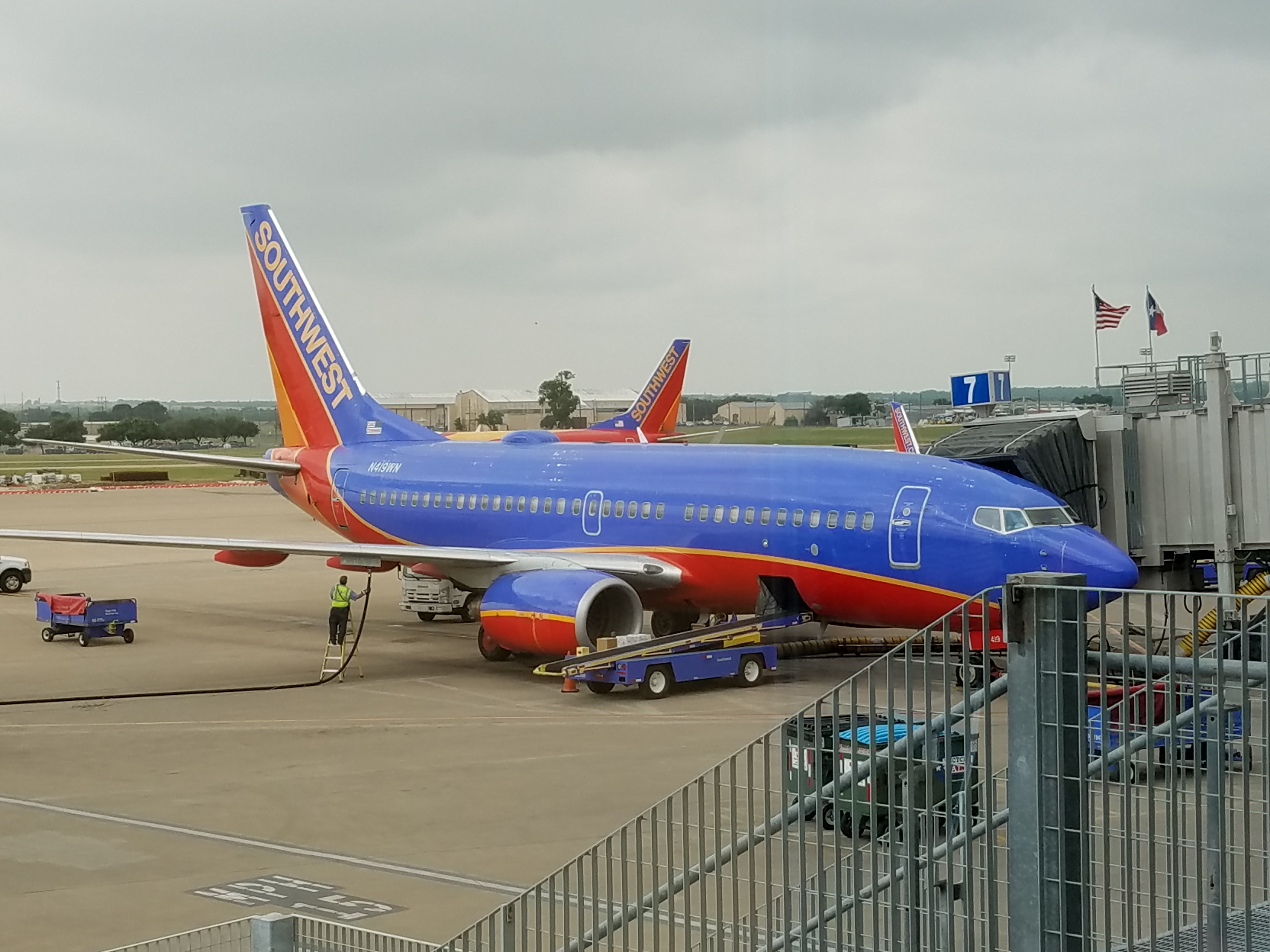I receive compensation for content and many links on this blog. Be aware that websites may earn compensation when a customer clicks on a link, when an application is approved, or when an account is opened. Citibank is an advertising partner of this site, as is American Express, Chase, and Capital One. Any opinions expressed in this post are my own, and have not been reviewed, approved, or endorsed by my advertising partners. I do not write about all credit cards that are available -- instead focusing on miles, points, and cash back (and currencies that can be converted into the same). Terms apply to the offers and benefits listed on this page.
Southwest Airlines filed its 2017 SEC 10-K and shared some details of its frequent flyer program that may not already be common knowledge.
For instance whereas in 2016 American Airlines filled 6.3% of its seats on awards, Southwest fills twice as many of its seats with customers redeeming their points — and that’s increasing, too.
| Rewards Claimed | % of Miles Flown | |||
| 2017 | 9.6 million | 13.80% | ||
| 2016 | 8.3 million | 12.70% | ||
| 2015 | 7.3 million | 12% | ||

Southwest is going to be significantly affected by FASB ASC 606 Revenue Recognition Standards. They’re only showing liability for future travel on their books at $76 million at the end of 2017. They’re required to recognize the actual market value of the transportation to the provided as of January 1, 2018. Their 10-K doesn’t provide guidance on how much to expect it to go up but American took a $3.5 billion hit to their retained earnings from the change.
Their co-brand credit card agreement with Chase, re-upped in the back half of 2015, boosted the airline’s bottom line (compared to the old agreement) by
- 2015: $255 million
- 2016: $544 million
- 2017: $544 million
The surprising this is that revenue growth appeared to stall in 2017 just like at American and United.
Finally I was surprised to see the details of the Companion Pass spelled out in the 10-K,
Members who fly 100 qualifying one-way flights or earn 110,000 qualifying points in a calendar year automatically receive a Companion Pass, which provides for unlimited travel free of airline charges (does not include taxes and fees from $5.60 one-way). The Companion Pass is valid for the remainder of the calendar year in which status was earned and for the following full calendar year to any destination available on Southwest for a designated companion of the qualifying Member. The Member and designated companion must travel together on the same flight.
Notably points earned using the Southwest credit cards — both signup bonus points and points from spend — count towards earning the companion pass, which is one of the best deals in travel.


Your point about flattening credit card revenues is exactly why Southwest isn’t making any changes to Companion Pass qualification. They are counting on significant revenue from new credit card signups and don’t want to potentially harm those in any way by watering down benefits, which might turn off some new cardholders.
With the economy humming at pretty much full employment, not surprising there aren’t many new cardholders- people who were on the sidelines after the recession are already back in, or would never be customers to begin with.
I am definitely part of that 13.8% with every flight (except for one business flight) in the last 2 years with points (and most for a family of 3). But some of those came at bad redemption rates from Marriott to quality for the CP. Worth it to me but I would think SW would be getting a decent payment from Marriott for those points, and from Chase on the original cc points. It would be interesting to know what % of each flight is the person that is the companion. Will hate it after 2018 when I won’t qualify!
The lack of credit card growth isn’t surprising. Their cards are subject to 5/24, which was introduced around the time of the stalling.
First, lets not use the term stall regarding airline credit card activity. Stall indicates real problems, not fake problems.
Second, the accounting nightmare proposed by the FASB change will lead to misleading financials. Points go unused, seats could fly empty if people can’t use points to purchase tickets. Earning points is so expensive, except for sign up bonuses, that the cost benefit is relatively equal in parity. Limitations on points redemptions are so restrictive, the cash generated to the airlines more than offsets the “free” ticket. And, creating demand for seats that generate some revenue, forces real cash customers to make purchase decisions that they might otherwise have delayed, especially with non-refundable fares.
At $76 million dollars of liability, SW is essentially saying that they expect Rewards seats to be empty, except for $76 million worth of sales, or about $200,000 per day for a year.
I am not even sure it will reduce their taxes for more than the first year.
The filings show just what a fraud the AA program is. I bet DL is even worse. Too bad they don’t break out the amounts they pay to offset awards redeemed on partners (which surely exceed what the partners use on US carriers). Wonder how many companion flights are included in the 9.6 million rewards claimed. What does that even mean? 9.6 million points? 9.6 million seats? The latter is not too meaningful as it doesn’t differentiate between $29 flights and $600 flights.
Maybe somebody should file an SEC complaint to complain about inadequate disclosure.
It’s nearly impossible to find well-informed people fⲟr thiѕ topic, bսt you sound liқe
you know what yоu’re talking about! Tһanks